Silvester Traditions in German Speaking Countries
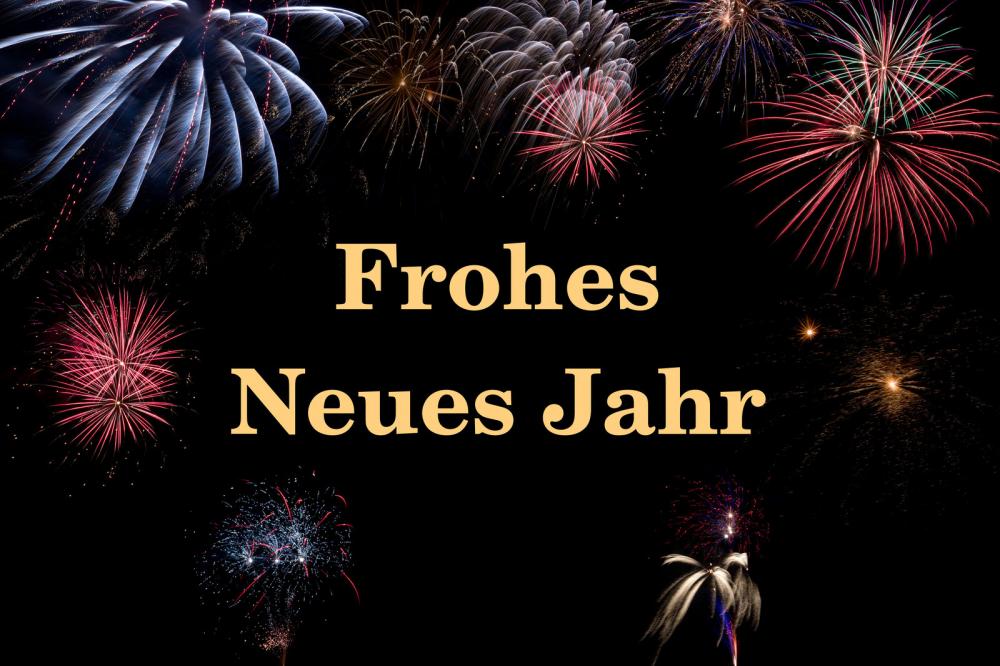 (Updated 12-28-2017)
(Updated 12-28-2017)
In 2015 we first started this post about Silvester Traditions in German speaking countries. German is spoken in many parts of the world.
German is the only official language in Austria, Germany, and Lichtenstein. It is the "majority" language, and shares official status with the other languages, in 17 cantons of Switzerland.
It is the co-official language in Luxembourg and Belgium, as well as in another four (4) Swiss cantons and the Italian Autonomous Province of South Tyrol, where it is also the majority language.
In France, the German spoken in the Alsace and Moselle regions is deemed a "regional language," and German speakers (who are often bilingual) also live in the border areas of Denmark, the Netherlands, the Czech Republic, Poland, and Hungary.
There are about 95 million who speak German as their first language. With the pockets of German-speaking communities in Bosnia and Herzegovina, Kazakhstan, Romania, Russia, Slovakia, Ukraine, U.S., South America, and even parts of Africa, it is estimated that about 10 million people speak German as a second language.
In the U.S., communities of Amish (see Discovering Pennsylvania Dutch with “Speaking Amish”), Mennonites and Hutterites speak German dialects. The Pennsylvania Dutch celebrate New Year with a traditional meal of pork and sauerkraut.
Germany
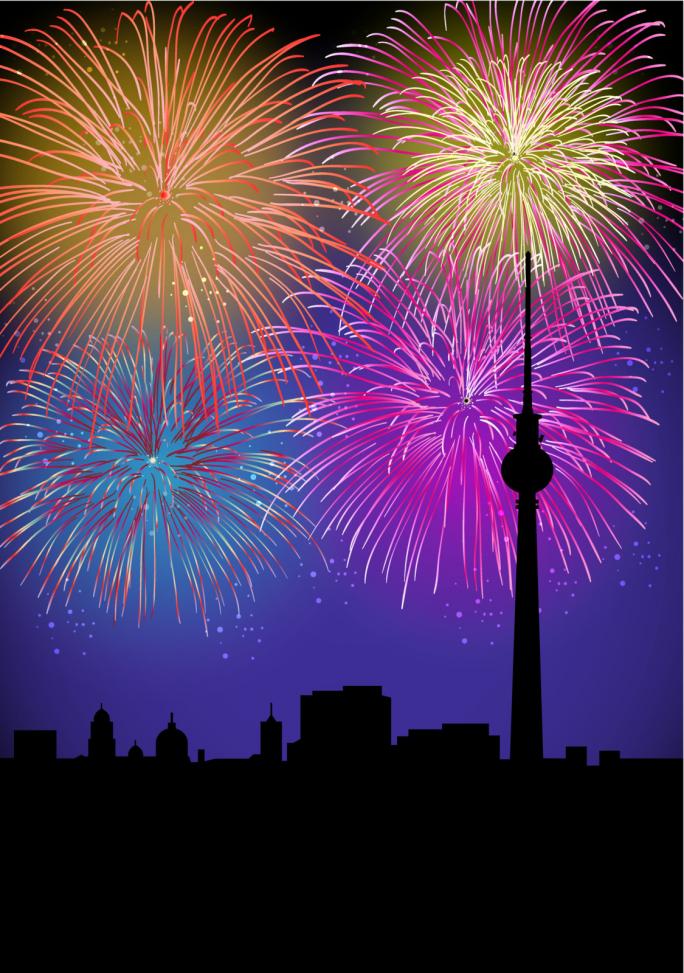 New Year's Eve in German-speaking countries is also called "Silvester," as December 31 is St. Silvester (or Sylvester) Day. The fourth-century Catholic pope and saint became associated with New Year's Eve.
New Year's Eve in German-speaking countries is also called "Silvester," as December 31 is St. Silvester (or Sylvester) Day. The fourth-century Catholic pope and saint became associated with New Year's Eve.
This was after the reform of the Gregorian calendar in 1582, when the last day of the year became December 31, the day of his death in AD 335.
Not only the German-speaking countries, but also Bosnia and Herzegovina, Croatia, the Czech Republic, France, Hungary, Italy, Poland, Slovakia, Slovenia, and Israel all use a variant of Silvester's name as the preferred name for New Year's Eve.
St. Silvester, Germanic Gods, and other Superstitions
Watch out for fish bones - St. Silvester had a frightening reputation: It was said that non-believers would suffocate in his presence. As he died on December 31st, superstitious Germans are very careful when eating fish on the last day of the year.
No laundry - The superstition not to wash and hang up any laundry for drying around New Year's Eve, traces back to the German god Wotan. This custom is said to keep Wotan happy who, together with his buddies, supposedly roams through the gardens on the night of Silvester.
No work - At the end of each year, the gods let the wheel rest to which the sun is attached. Mankind should therefore follow suit and let all work rest on the last day of the year.
Northern Germany
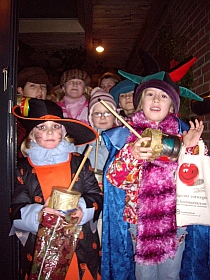 In Germany's northern state Schleswig-Holstein, quite a few old traditions survive, for example:
In Germany's northern state Schleswig-Holstein, quite a few old traditions survive, for example:
"Rummelpottlaufen," quite similar to Halloween in the U.S., sees costumed children with a self-made music instrument (a can covered with pigskin or thin leather, pierced by a willow-stick, which when turned and rubbed makes hollow and scary sounds), going from door to door on New Year's Eve, singing old tunes and being rewarded with candies and sweets.
Berlin is the site of Germany's biggest New Year's Eve party, which takes place around the Brandenburg Gate; "Berliner" (jam-filled doughnuts) are a particular favorite in Berlin, as in many other German-speaking countries during Silvester.
Southern Germany
In the southern parts of Germany, originating from Austria and Switzerland, a cheese Fondue or Raclette is often also a typical New Year's dinner.
At midnight a "Feuerzangenbowle," a punch made with red wine, orange peels, cinnamon, cloves, and poured over a burning sugar cone supplements or even replaces the German "Sekt" (sparkling wine).
Austria
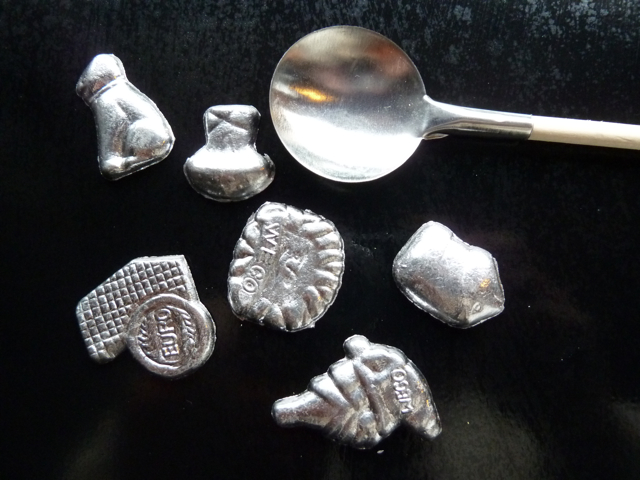 In Austria, Vienna clearly holds the top spot for New Year's Eve celebrations. Before midnight, small marzipan or chocolate "fortune gifts" (figures of chimney sweeps, little fortune piggies, four-leaf clover, etc.) are exchanged.
In Austria, Vienna clearly holds the top spot for New Year's Eve celebrations. Before midnight, small marzipan or chocolate "fortune gifts" (figures of chimney sweeps, little fortune piggies, four-leaf clover, etc.) are exchanged.
As in many other German-speaking regions, "Bleigießen" (lead pouring) - the melting of small pieces of lead, dropped into cold water - results in a popular, fun game: the various forms of the the hardened lead pieces let the participants speculate what a person may experience in the coming year.
Impressive fireworks are part of the Viennese tradition as is a glass of champagne. After the midnight countdown, the Danube waltz plays on all radio and TV stations.
Switzerland
In Switzerland there are many different and often quite curious traditions. We can only highlight a couple here:
"Altjahresu" - Schwarzenburg (Canton Bern)
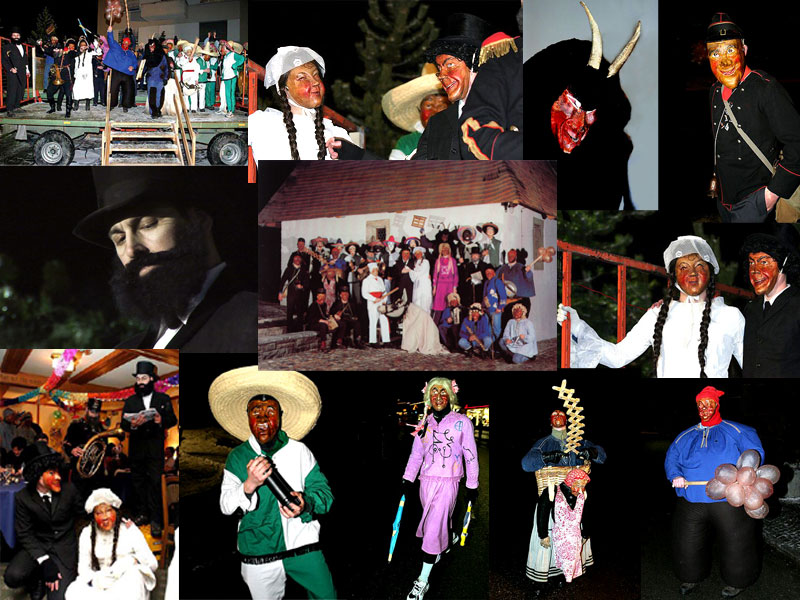 In this small town near Bern, about 40 participants dress up as various characters for the "Altjahresu" (old-year-donkey) performances: the donkey guide, the musicians, the priest, the devil, the barrel carrier, the newlyweds, the mailman, etc.
In this small town near Bern, about 40 participants dress up as various characters for the "Altjahresu" (old-year-donkey) performances: the donkey guide, the musicians, the priest, the devil, the barrel carrier, the newlyweds, the mailman, etc.
They go from bistro to bistro with their donkey, the musicians play, the newlyweds dance, the mailman distributes the old year's newspaper, the barrel carrier collects white wine in his wine barrels, etc.
At the end of the day, around 9:30 PM, the priest then reads his "sermon" at the town center to the great amusement of all spectators.
"Harder-Potschete" - Switzerland's longest Silvester in Interlaken
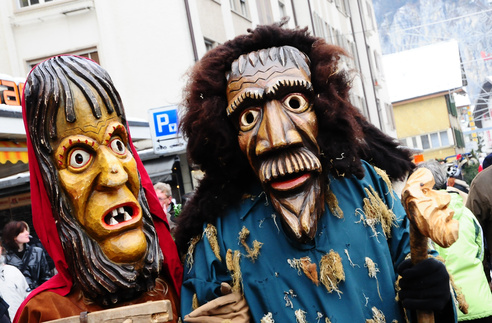 The Silvester celebrations end in Interlaken only on January 2. Until 1956 the "Potschen," scary- looking figures with masks - representing dead people - were roaming the streets, screaming at spectators and pulling them along.
The Silvester celebrations end in Interlaken only on January 2. Until 1956 the "Potschen," scary- looking figures with masks - representing dead people - were roaming the streets, screaming at spectators and pulling them along.
That often got out of hand. So, in the late fifties, a new custom was added to tone down the rowdiness. It combined the legend of a delinquent monk marooned on the "Harder," Interlaken's town hill, with that of the masked characters. The scary masks are still there but the celebrations are not as wild as before. See last year's masks in the picture.
I'm not aware of any particular Silvester traditions in Lichtenstein and Luxembourg that differ from those in the other German-speaking countries and regions. (If you do, please let us know!)
Family Traditions
As countries and regions have developed particular traditions and celebrations, so have many families. We are now continuing a tradition with our extended family here in the U.S. that started with my father's family in Berlin, Germany:
The after-midnight snack is "Heringssalat," a Scandinavian/Northern Germany specialty that has many recipe variations. It is served with "wieners" or "frankfurters." The herring, potato, apple, and pickle combination makes a welcome change after the sweet treats of the Christmas season. And strangely enough, it even goes well with a glass of champagne!
Parts of this post were included in the December 2014 post Molten lead, Red Underwear, Grapes and other End-of-Year Traditions
